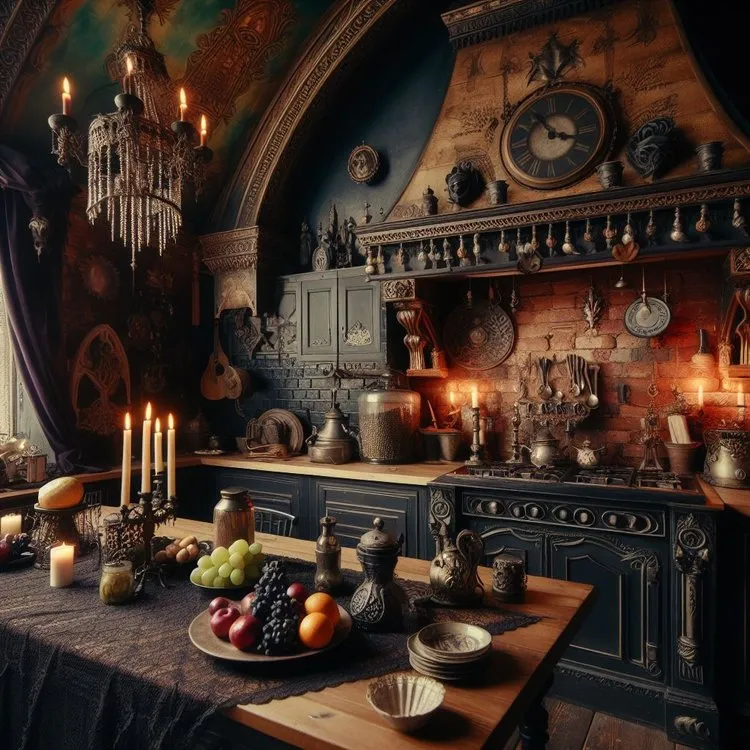The Allure of Gothic Kitchen Decor
Gothic kitchen decor offers a unique blend of drama, history, and sophistication. It’s a style that embraces the darker side of design, creating spaces that are both mysterious and inviting. Unlike the clean lines of modern kitchens or the rustic charm of farmhouse styles, Gothic design leans into ornate details, rich textures, and a sense of timeless elegance. Transforming your kitchen into a gothic haven is an exciting endeavor, allowing you to express your individuality and create a space that feels truly special. This article explores five stunning design ideas to help you achieve the perfect gothic kitchen decor.
Understanding the Gothic Aesthetic
Before diving into specific design ideas, it’s essential to understand the core principles of the gothic aesthetic. This style draws inspiration from medieval architecture, literature, and art. It is characterized by a romanticized and often dramatic approach to design. Think of castles, cathedrals, and the romantic stories of the past. When incorporating gothic elements into your kitchen, the aim is to evoke a sense of grandeur and history, while still maintaining a functional and welcoming space. This style is not just about dark colors; it’s about the careful use of textures, details, and lighting to create a unique atmosphere.
Key Characteristics of Gothic Design
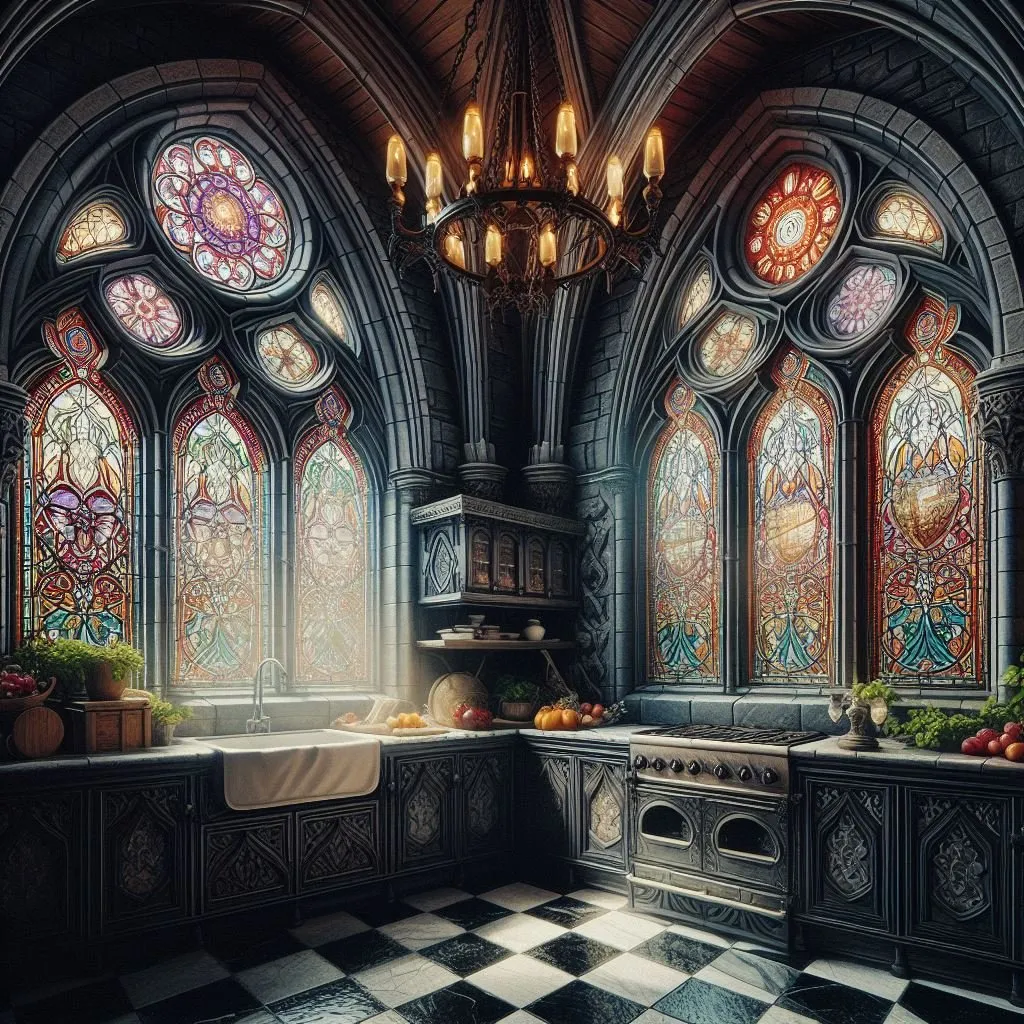
Several key characteristics define gothic design. Arches are a prominent feature, often seen in doorways, windows, and decorative elements. Ornate details, such as carvings and embellishments, add depth and visual interest. The use of rich, dark colors is another hallmark, creating a moody and sophisticated ambiance. Heavy materials, such as stone, wood, and iron, contribute to the overall sense of solidity and permanence. The gothic aesthetic is all about creating a space that feels both historical and luxurious. By understanding these key elements, you can start to incorporate them into your kitchen design to create a cohesive and stylish look.
Color Palette for Gothic Kitchens
The color palette is crucial in setting the tone for your gothic kitchen. Dark, saturated hues are the foundation of this style. Deep blacks, charcoal grays, and shades of burgundy or emerald green are all excellent choices. Consider incorporating these colors on your cabinetry, walls, and even your countertops. Metallic accents, such as gold, silver, or bronze, can add a touch of luxury and contrast against the darker tones. Avoid bright, cheerful colors; instead, opt for hues that evoke a sense of mystery and elegance. Remember that lighting is essential for balancing dark colors, so ensure your kitchen has a variety of light sources to avoid a completely gloomy atmosphere.
Design Idea 1: Dark & Moody
Embracing a dark and moody color scheme is the cornerstone of gothic kitchen design. Start with dark cabinetry in shades of black, deep gray, or even a rich, dark blue. This will instantly set the tone for a dramatic space. Combine these dark cabinets with contrasting elements, like a lighter countertop made of marble or a stone that offers contrast. Walls can be painted in a similar dark hue or textured with wallpaper that features gothic-inspired patterns. The goal is to create a sense of depth and mystery, transforming your kitchen into a captivating retreat. This design idea focuses on creating a strong visual impact, making it a perfect choice for those who want a truly unforgettable kitchen.
Embracing Dark Colors
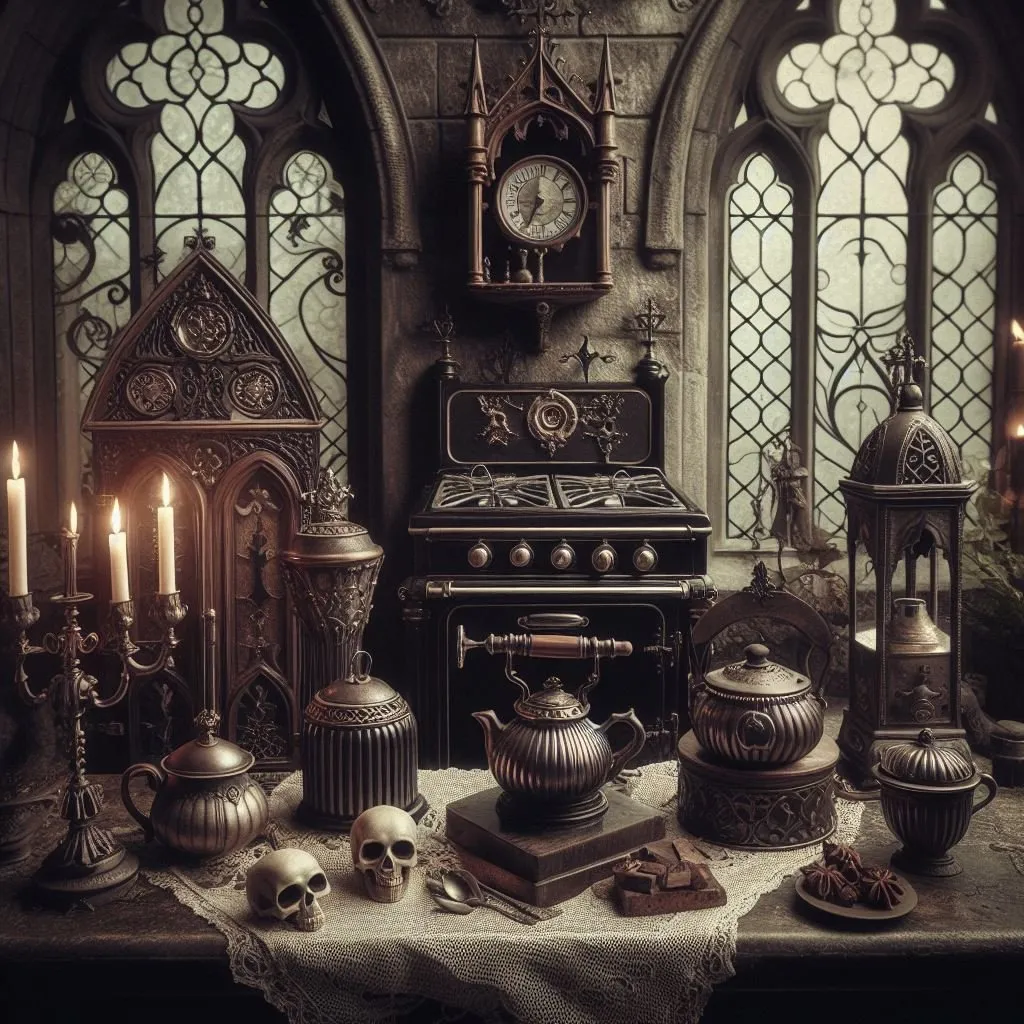
When choosing your color palette, don’t be afraid to embrace the darker shades. Black cabinetry can be incredibly striking, especially when paired with lighter countertops. Deep grays are also an excellent choice, providing a sense of sophistication without being overwhelming. Consider using these colors on your walls, cabinetry, and even your appliances. To prevent the space from feeling too enclosed, balance the darkness with lighter elements. This can include a lighter backsplash, metallic hardware, or well-placed mirrors to reflect light. Experiment with different combinations to find the perfect balance between darkness and elegance.
Lighting and Ambiance
Lighting is crucial in a dark and moody kitchen. Use a combination of ambient, task, and accent lighting to create the right atmosphere. Chandeliers, sconces, and pendant lights with intricate designs can add a touch of gothic elegance. Consider using dimmer switches to adjust the lighting intensity throughout the day. Accent lighting, such as under-cabinet lights or spotlights, can highlight specific features like artwork or decorative objects. Avoid harsh, bright lights. Instead, opt for warm, inviting light sources that enhance the overall mood. Well-placed lighting is essential for creating a kitchen that is both functional and visually stunning.
Design Idea 2: Ornate Details
Ornate details are the defining feature of gothic design, and your kitchen is a perfect place to showcase them. Look for cabinetry with intricate carvings, moldings, or decorative panels. Choose hardware, such as cabinet knobs and pulls, with a vintage or antique look. Consider incorporating arched doorways, windows, or decorative elements to capture the gothic aesthetic. The focus is on the details, which elevates the space and adds a sense of luxury and sophistication. This approach adds a layer of visual interest and elegance, making your kitchen stand out. The more details you incorporate, the more authentic the gothic feel will be.
Incorporating Ornate Hardware
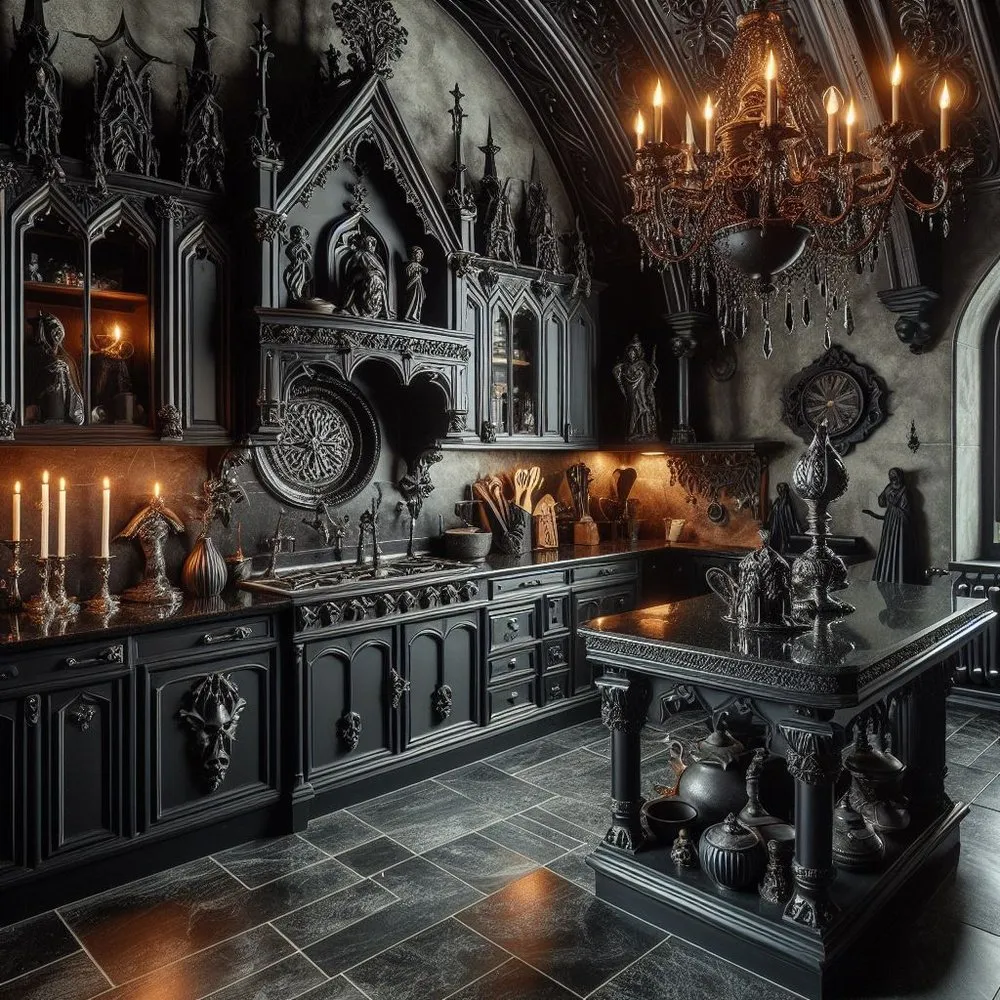
Hardware is an easy and effective way to add gothic charm to your kitchen. Look for knobs and pulls made of wrought iron, bronze, or other metals with an antique finish. Consider ornate designs like fleur-de-lis, crosses, or other gothic-inspired motifs. The hardware should complement the overall aesthetic, providing a touch of elegance and detail. Even replacing your existing hardware can make a significant difference in transforming your kitchen into a gothic space. These small details can create a cohesive design, adding a layer of sophistication and style. Ensure your hardware complements the overall design, ensuring every element contributes to the gothic aesthetic.
Decorative Elements
Decorative elements are essential for completing the gothic look. Incorporate items such as ornate mirrors with elaborate frames, antique candelabras, and decorative plates with gothic patterns. Consider adding tapestries or wall hangings that reflect the style. Don’t be afraid to include gothic-inspired art pieces. These can range from portraits to landscapes that complement the aesthetic. The goal is to create a space that feels curated and historically rich, adding depth and personality. Incorporating unique items enhances the gothic theme. The details can enhance and elevate the space.
Design Idea 3: Texture & Materials
Texture and materials play a key role in gothic kitchen decor. Incorporate materials like stone, brick, wood, and metal to add depth and interest to your space. A stone or brick backsplash can create a rustic, medieval feel. Consider wooden beams on the ceiling to add warmth and character. Metal accents can be incorporated through hardware, lighting fixtures, and even kitchen appliances. The juxtaposition of different textures creates a visually rich and inviting space. This design emphasizes layering different textures to create a captivating atmosphere, adding depth and character.
Using Stone and Brick
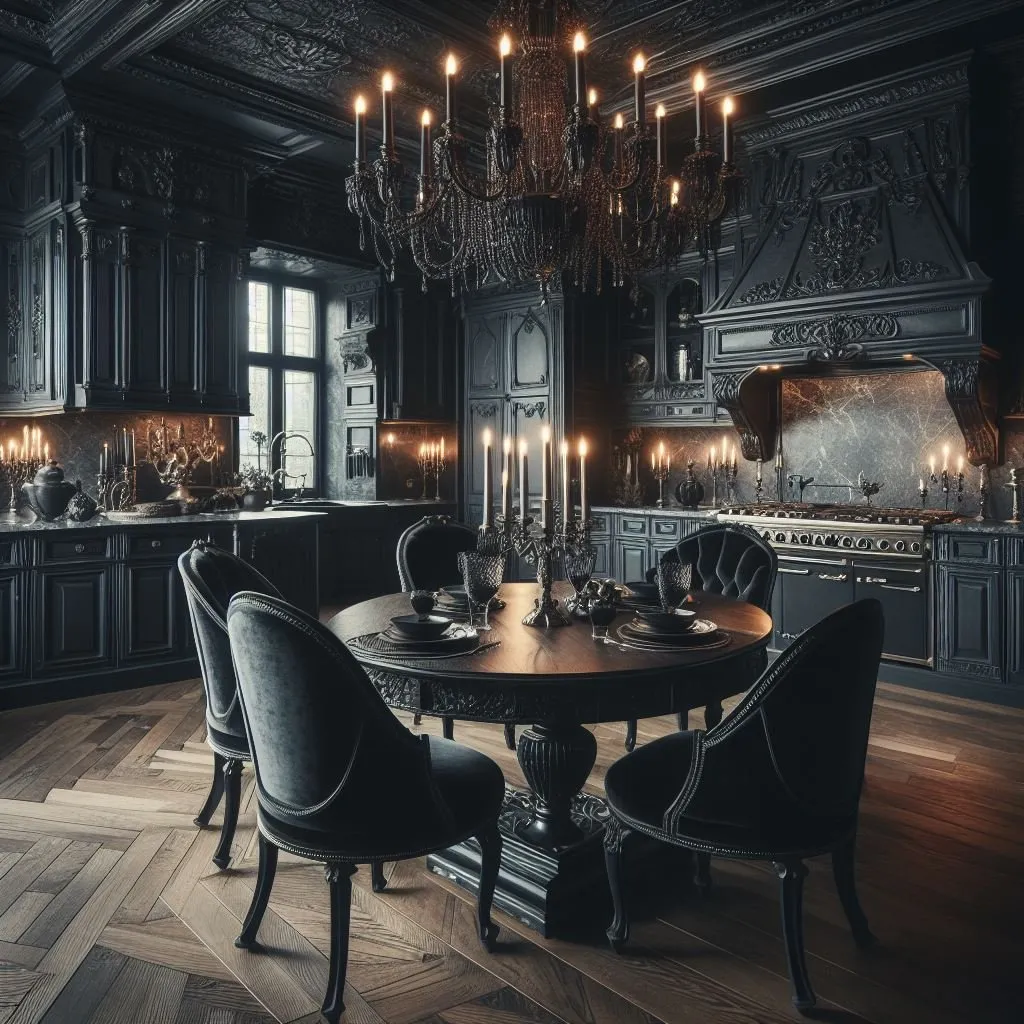
Stone and brick are classic materials that evoke a sense of history and permanence. Consider a stone or brick backsplash, a stone countertop, or even a brick accent wall to create a rustic, medieval feel. These materials add texture and visual interest, giving your kitchen a solid and grounded feel. Pair these elements with darker cabinetry and metal accents to enhance the gothic aesthetic. The use of natural materials provides an authenticity that complements the gothic style. Ensure the stone or brick is sealed properly for practicality, while retaining its visual impact.
Adding Velvet and Leather
Velvet and leather are luxurious materials that add a touch of elegance and comfort to your gothic kitchen. Consider incorporating velvet-covered bar stools or leather seating in your dining area. These materials offer a visual contrast to the harder materials, such as stone and metal, providing a sense of warmth. Velvet drapes or a leather-bound kitchen island can enhance the overall design. These luxurious elements provide depth and a rich atmosphere, enhancing the feeling of luxury and comfort in your gothic kitchen. Their tactile appeal will also enhance the overall experience.
Design Idea 4: Statement Lighting
Statement lighting is crucial for creating the perfect gothic ambiance. Choose fixtures that are both functional and visually striking. Chandeliers, sconces, and pendant lights with intricate designs can add a touch of elegance. Consider using antique or vintage light fixtures to enhance the gothic aesthetic. The type of lighting you use can greatly influence the mood and feel of your space. This design focuses on using light fixtures as focal points, allowing them to contribute to the overall theme. This approach will make your kitchen feel authentic and elegant, showcasing a unique aesthetic.
Chandeliers and Sconces
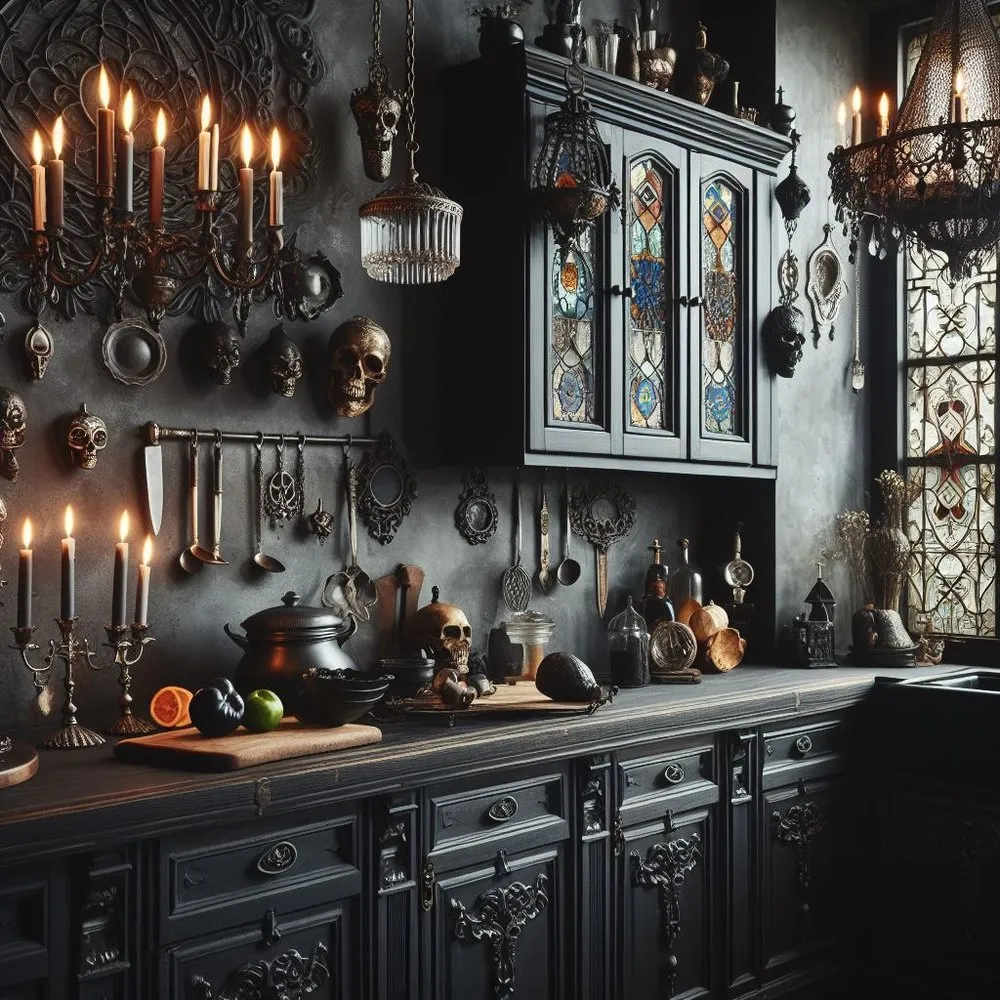
Chandeliers are a quintessential element of gothic design. Choose a chandelier with an ornate design, such as wrought iron with candle-style bulbs. Sconces can be used to add accent lighting and create a romantic atmosphere. Look for sconces with intricate details or gothic-inspired motifs. When selecting lighting, consider the size and scale of your kitchen. The right lighting can create both drama and elegance. Chandeliers and sconces will be the statement pieces that enhance the theme.
Candlelight and Mood Lighting
Candlelight is another essential element for gothic kitchens. Use real candles or flameless LED candles to create a warm, inviting glow. Consider placing candles on your countertops, shelves, and dining table to enhance the ambiance. Mood lighting, such as dimmer switches and under-cabinet lights, can also be used to create a sense of mystery and drama. Experiment with different lighting levels to achieve the perfect balance of light and shadow. The strategic placement of candles and the ability to adjust the light levels will create the perfect mood, making your kitchen truly gothic.
Design Idea 5: Accessorizing
Accessorizing is the finishing touch that ties your gothic kitchen together. Choose accessories that complement the overall aesthetic and reflect your personal style. Display gothic collectibles such as antique books, ornate dishes, or gothic-inspired artwork. Consider incorporating elements such as mirrors, candelabras, and decorative sculptures. The right accessories can transform your kitchen from a functional space into a statement piece. This approach focuses on adding a layer of personality and character, making your kitchen uniquely yours. Accessorizing adds depth, giving the kitchen a finished look.
Choosing the Right Accessories
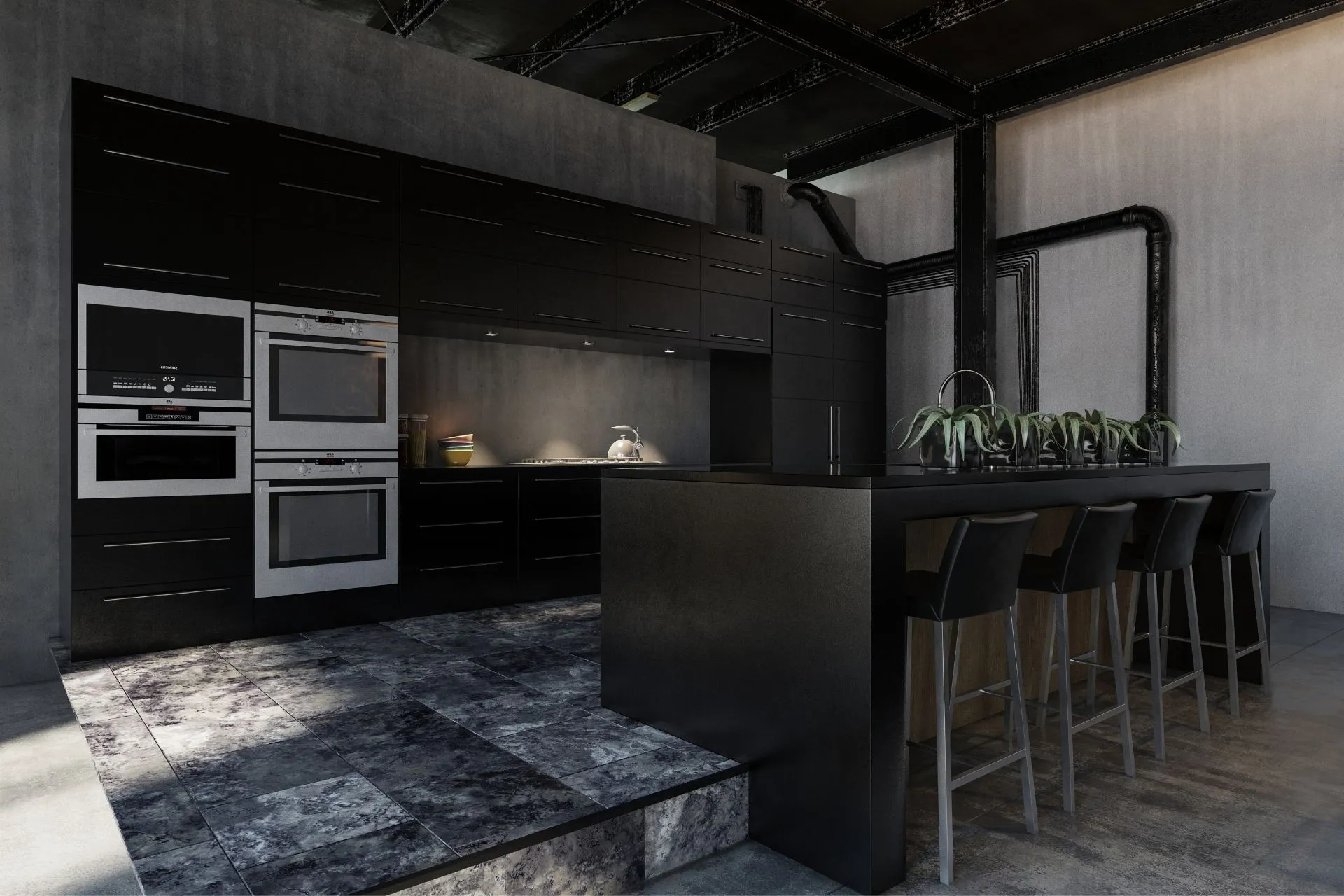
When choosing accessories, consider items that reflect the gothic aesthetic. Look for antique or vintage pieces, such as ornate mirrors, candelabras, and decorative sculptures. These can add a sense of history and elegance to your kitchen. Choose items with intricate details, such as fleur-de-lis, crosses, or gothic-inspired patterns. Don’t be afraid to incorporate items that you find interesting or that hold personal meaning. The goal is to create a space that feels curated and reflects your unique taste. Consider a gothic theme, ensuring accessories contribute to the overall theme.
Displaying Gothic Collectibles
Displaying gothic collectibles is an excellent way to personalize your kitchen. Consider showcasing antique books, ornate dishes, or gothic-inspired artwork on open shelves or within glass-front cabinets. These items add character and provide a focal point. The way you display your collectibles can significantly impact the overall design. Create visually appealing arrangements by grouping similar items together. The careful placement of gothic collectibles can make your kitchen feel more authentic, contributing to the overall design. Displaying gothic items in a curated manner makes your kitchen a unique space.
Conclusion: Creating Your Gothic Kitchen
Creating a gothic kitchen is a rewarding project, transforming your space into a dramatic and stylish retreat. By incorporating these five design ideas, you can bring the allure of the gothic aesthetic into your home. Remember to focus on the key elements of gothic design, including a dark color palette, ornate details, rich textures, and statement lighting. By choosing the right accessories and personalizing the space, you can create a kitchen that feels both elegant and inviting. Embrace the darker side of design and start creating the gothic kitchen of your dreams today. With careful planning and attention to detail, your kitchen can become a true masterpiece of gothic design.
